
BUDDLEJA HYBRIDS
Revised August 2022
Introduction
These are hybrids of a few different species, and plants I have experience of growing. Most are fully hardy and a few may benefit from winter protection. These can be hybrids between species that wouldn't normally come into contact with one another, as the parents are from different continents. Buddleja is a promiscuous genus, and significant geographical and phylogenetic separation does not necessarily prevent hybridisation between the species.
I haven't included the B. fallowiana x B. davidii hybrids here, as the two species are so similar, and several of the common cultivars include some contribution from B. fallowiana. These can be found with the B. davidii cultivars.
Contents
● Dwarf Hybrids
● Argus® Velvet
● Longstock Pride
● Orange Sceptre
● Salmon Spheres
● Silver Anniversary
● Buddleja x weyeriana
● Winter Sun
● Other Hybrids
Dwarf Hybrids
In recent years, since the introduction of LO AND BEHOLD® 'Blue Chip', there has been an explosion in the number of small Buddleja released to the horticultural tarde. Quite often, these cultivars have several species in their heritage. There are dedicated pages for the LO AND BEHOLD® and FLUTTERBY® ranges, as these were the first released and have the most extensive range of species involved in their development.
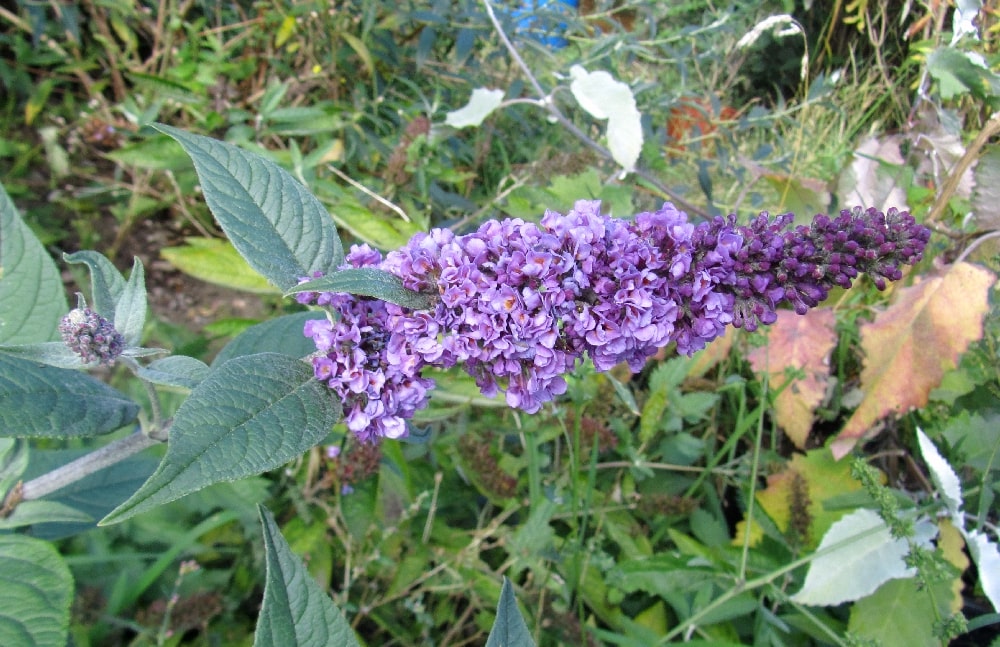
LO AND BEHOLD® 'Blue Chip'
Open full size image in a new window
ARGUS® VELVET
syn. INSPIRED® VIOLET, 'ILVOargus2'
A hybrid of B. davidii 'Nanho Purple' and B.lindleyana, raised in Belgium at the Instituut voor Landbouw- en Visserijonderzoek (ILVO) around the middle of the 2000s, and a hybrid of the type Buddleja x luteolufaucia. With foliage intermediate between the parents, the long flower panicle consists of many purple flowers with long, slightly curving corolla tubes. It can grow quite large, and has a somewhat weeping habit. The flowers come rather late in the summer, or even early autumn. Although billed as non-invasive, I've found it fully seed-fertile.
There is also a similar ARGUS® WHITE (syn. INSPIRED® WHITE, 'ILVOargus1'), bred using B. davidii 'Nanho Alba', which is a less vigorous shrub.
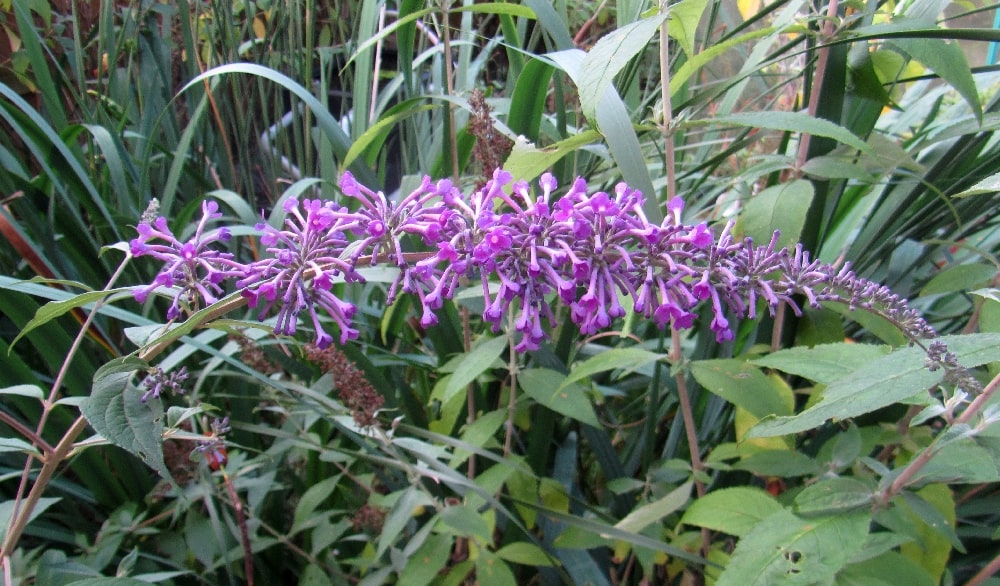
ARGUS® VELVET
Open full size image in a new window
'Longstock Pride'
An excellent plant from Peter Moore of Longstock Nursery (Hampshire), also sometimes called 'Pride of Longstock'. A hybrid of B.lindleyana and B.crispa, with the former species' traits being somewhat dominant. This is the same cross as the rarely seen 'Pride of Hever' hybrid, which it closely resembles. The leaves are more like B. lindleyana, but with slightly serrated margins. The flowers appear late summer and are in open panicles, which are less pendulous than B. lindleyana. They are bright purple and retain some of the fine B. crispa scent. Deciduous except in the mildest winter, this Buddleja usually bursts back into life in late March. It is supposed to stay small, but mine grew to over two metres in a short time, so spring pruning is recommended.
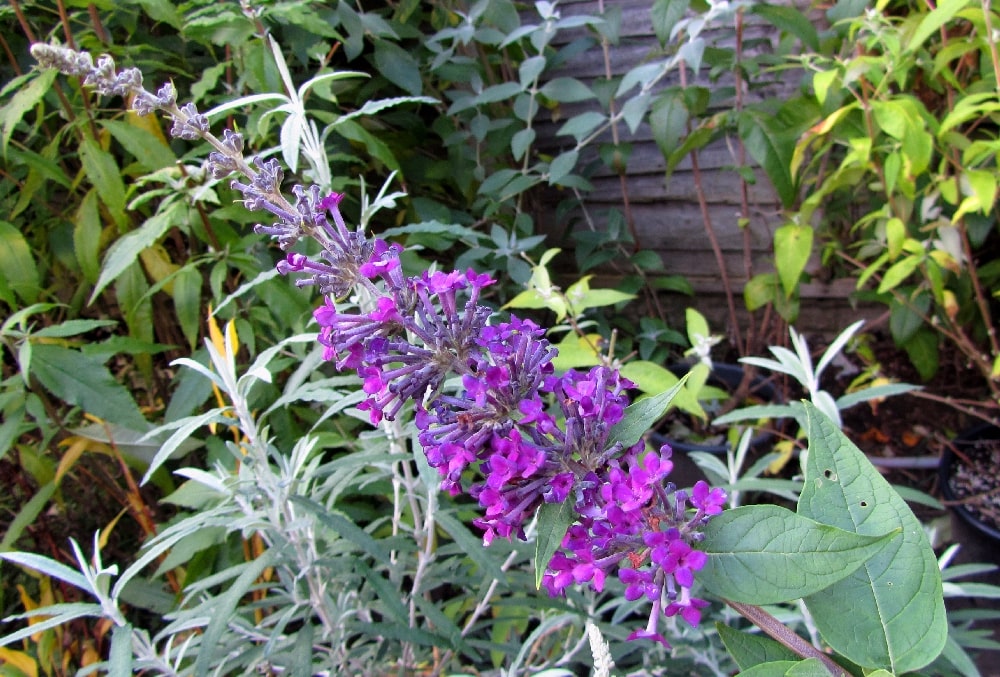
'Longstock Pride' has bright purple flowers
Open full size image in a new window
'Orange Sceptre'
'Orange Sceptre' is a B. stachyoides x B.tubiflora hybrid, bred in America a few yeas ago. The parent species are both from South America and neither is truly hardy. The hybrid is possibly a little hardier, maybe suitable for growing outside only in warm coastal areas and if given additional shelter. Generally, this is probably best suited to a large pot where it can be taken under cover for the winter. It's susceptible to Botrytis mould and will die back over winter, but will grow back strongly in spring.
'Orange Sceptre' is a vigorous shrub with large felted leaves, grey-green in colour, with toothed margins. The flowers are orange and arranged in an upright sceptre-like panicle. The flowers are hermaphrodite and self fertile and this hybrid comes more or less true from seed.
Another hybrid called 'Winter Waterfall', (B. asiatica x B. crispa) x B. asiatica, was developed at the same time.
Ref: Lindstrom, J.T., Dunn, B.L. and Renfro, S.E. (2009). Buddleja 'Orange Sceptre' and 'Winter Waterfall'. J. Environ. Hort. 27:188-189
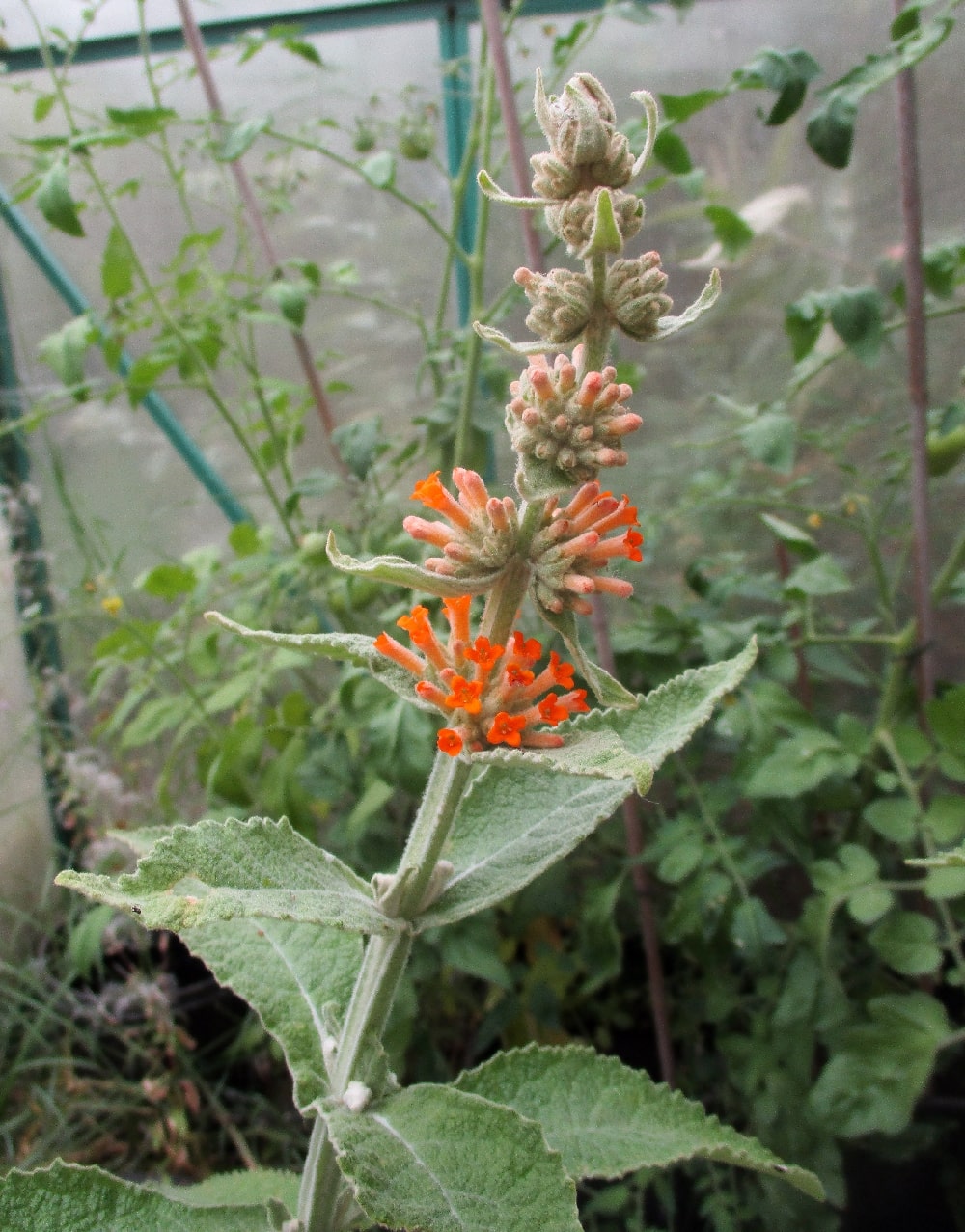
'Orange Sceptre' has an exotic appearance
Open full size image in a new window
'Salmon Spheres'
This hybrid was raised by Steve Nevard in London, UK, from a cross of B. globosa and B. crispa, two species originating from different continents. 'Salmon Spheres' is a large vigorous and spreading shrub with heavily felted grey foliage reminiscent of B. crispa except for its shape. The inflorescence consists of 3-9 loose balls, not unlike B. globosa in form. The flower colour is variable, being mostly a salmon-pink which later gives way to an underlying orange pigment. 'Salmon Spheres' flowers in the spring following a mild winter, and also in the late summer into the autumn, sometimes until the first hard frosts. It is semi-evergreen and hardy in an average winter provided the situation is sheltered and the soil free-draining.
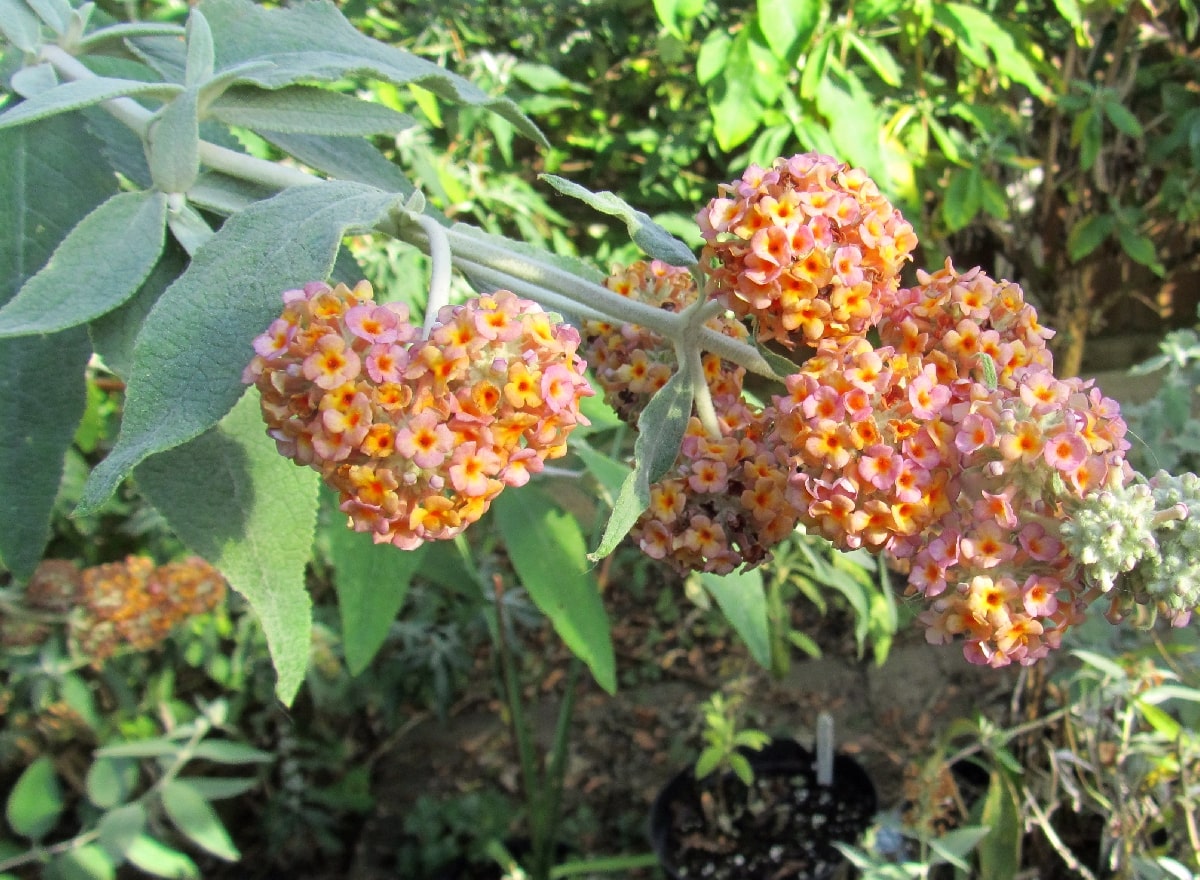
'Salmon Spheres' has flowers that can vary in colour
Open full size image in a new window
'Silver Anniversary'
syn. 'Morning Mist'
B.loricata x B.crispa, bred by Peter Moore at Longstock Nursery, Hampshire. Very attractive grey/silver foliage like B. crispa, but more oval in shape. The scented white flowers are very similar to B. loricata, and can appear in spring, summer or autumn depending on growing conditions. 'Silver Anniversary' stays less than a metre tall if kept pruned. Hardy in England, but it can struggle in a harsh or very wet winter, preferring dry conditions.
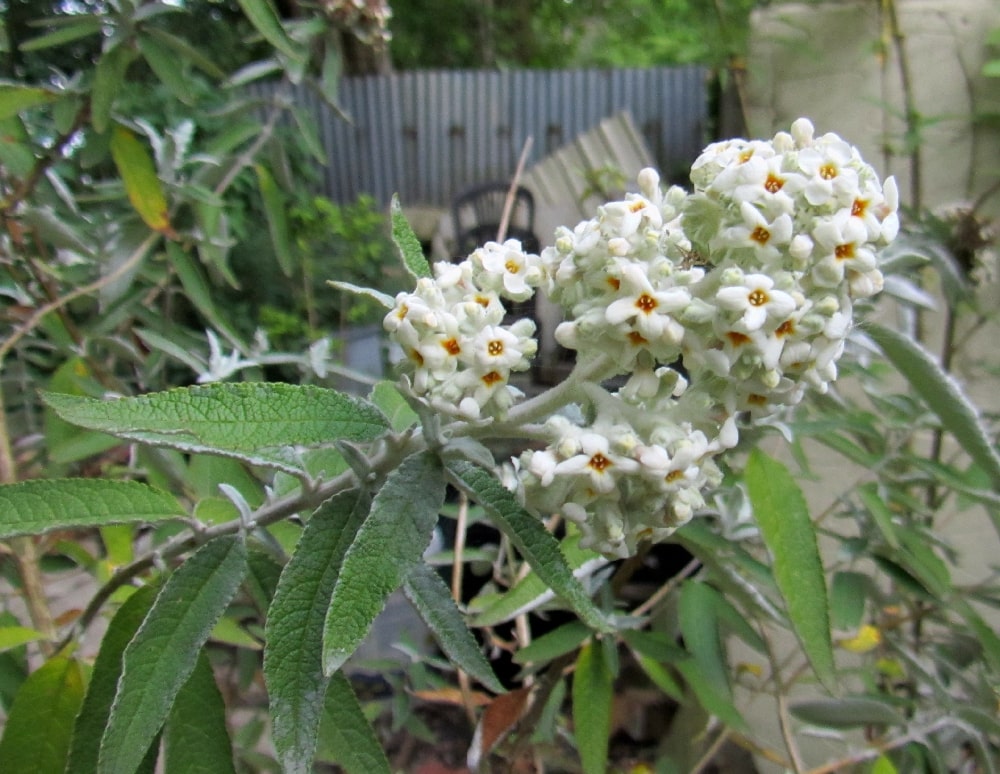
The flowers of 'Silver Anniversary' are quite similar to B. loricata
Open full size image in a new window
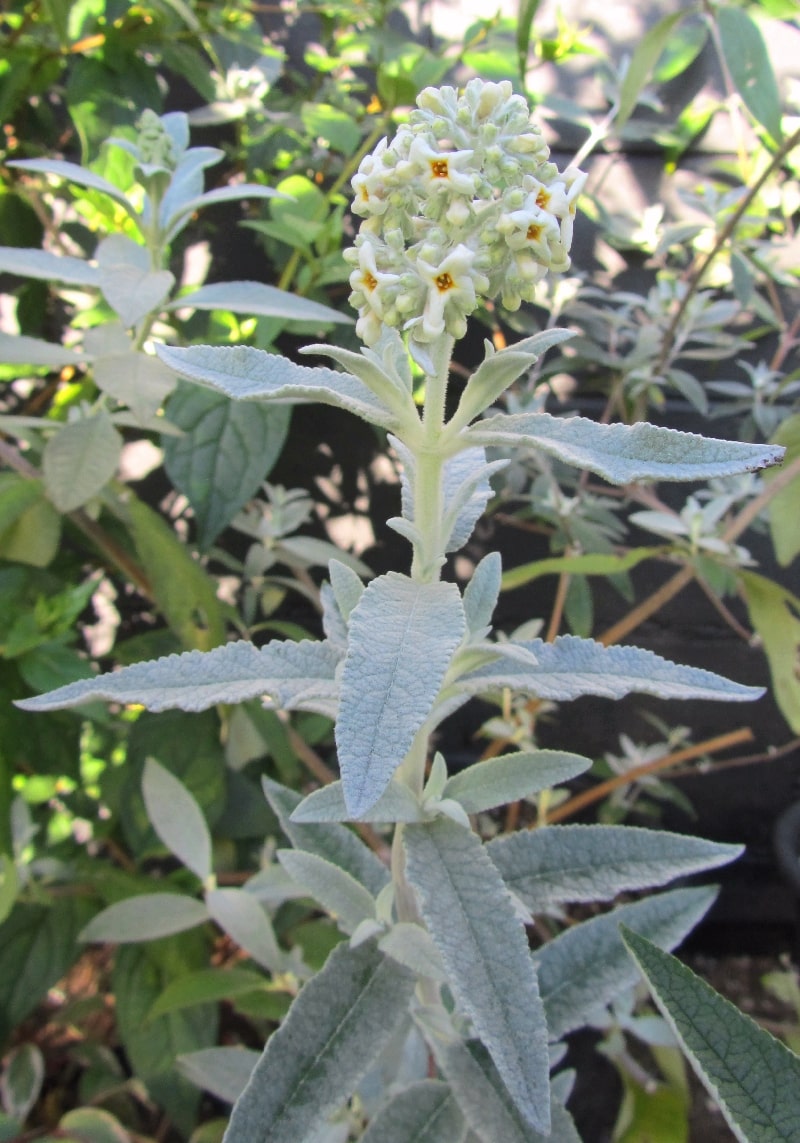
'Silver Anniversary' has narrow felted foliage
Open full size image in a new window
Buddleja x weyeriana
B. x weyeriana is an F2 hybrid of B.globosa and B. davidii, bred early in the 20th century by van de weyer (Corfe Castle, Dorset). The original hybrid was 'Golden Glow', followed soon after by 'Moonlight'. 'Sungold' is a sport of 'Golden Glow', discovered in the 1960s in the Netherlands. All the other cultivar names are most likely illegitimate synonyms.
This is a popular, and often misunderstood, group of hybrids, so I have a dedicated Buddleja x weyeriana page.
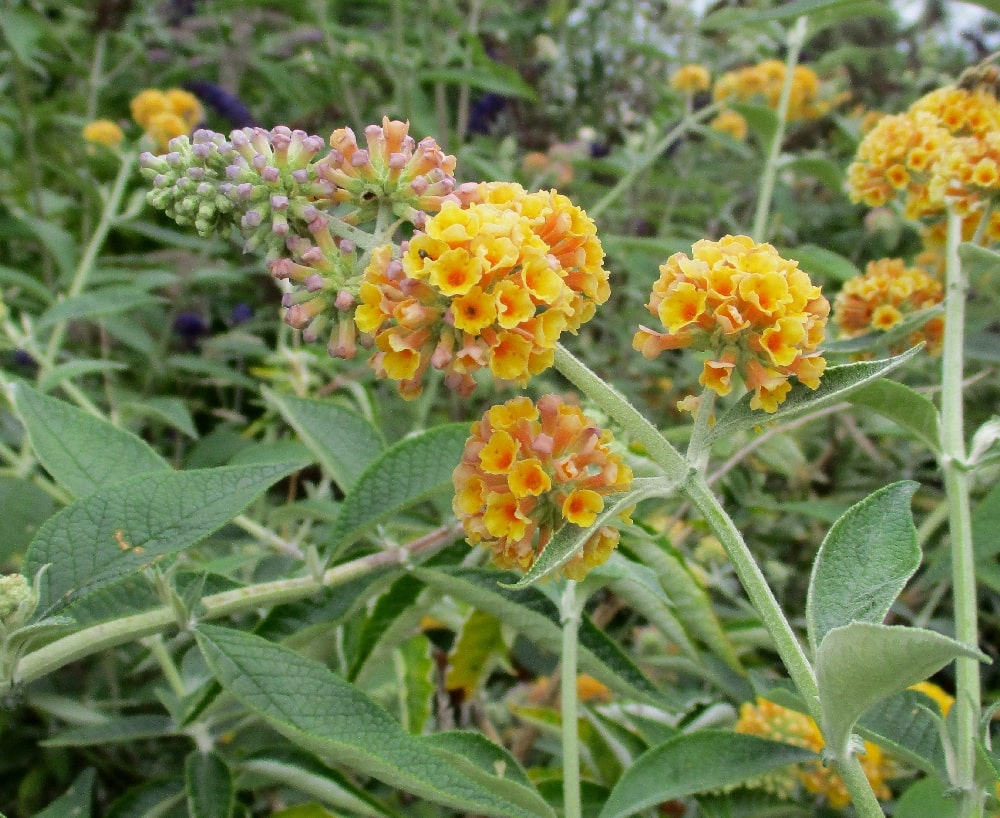
'Golden Glow' was the original B. x weyeriana cultivar
Open full size image in a new window
'Winter Sun'
Also raised by Steve Nevard, 'Winter Sun' is a large vigorous shrub, a hybrid of B. officinalis and B. araucana, species from differing continents. The foliage is large and felted with a rugose upper surface, and the leaf undersides are covered in a tan indumentum, a trait inherited from B. araucana. The inflorescence consists of 3-9 loose balls of 20-30 flowers, similar to B. x weyeriana in shape. The individual flowers are have a base yellow pigment flushed with lilac and mauve. It blooms in the early part of the season, February to April; the flower buds are formed the previous autumn and held dormant during the winter months.
'Winter Sun' is relatively hardy, but requires shelter from cold winds and a well-drained soil. A mild spring without hard frosts is necessary for it to bloom effectively outside, as the flower buds are easily damaged and may be lost during harsh conditions; it is possible to grow it in a large pot and keep it undercover in a cool greenhouse during the winter months, but I found it shy to flower grown this way. 'Winter Sun' is not at all common, but it is an interesting and unusual hybrid.
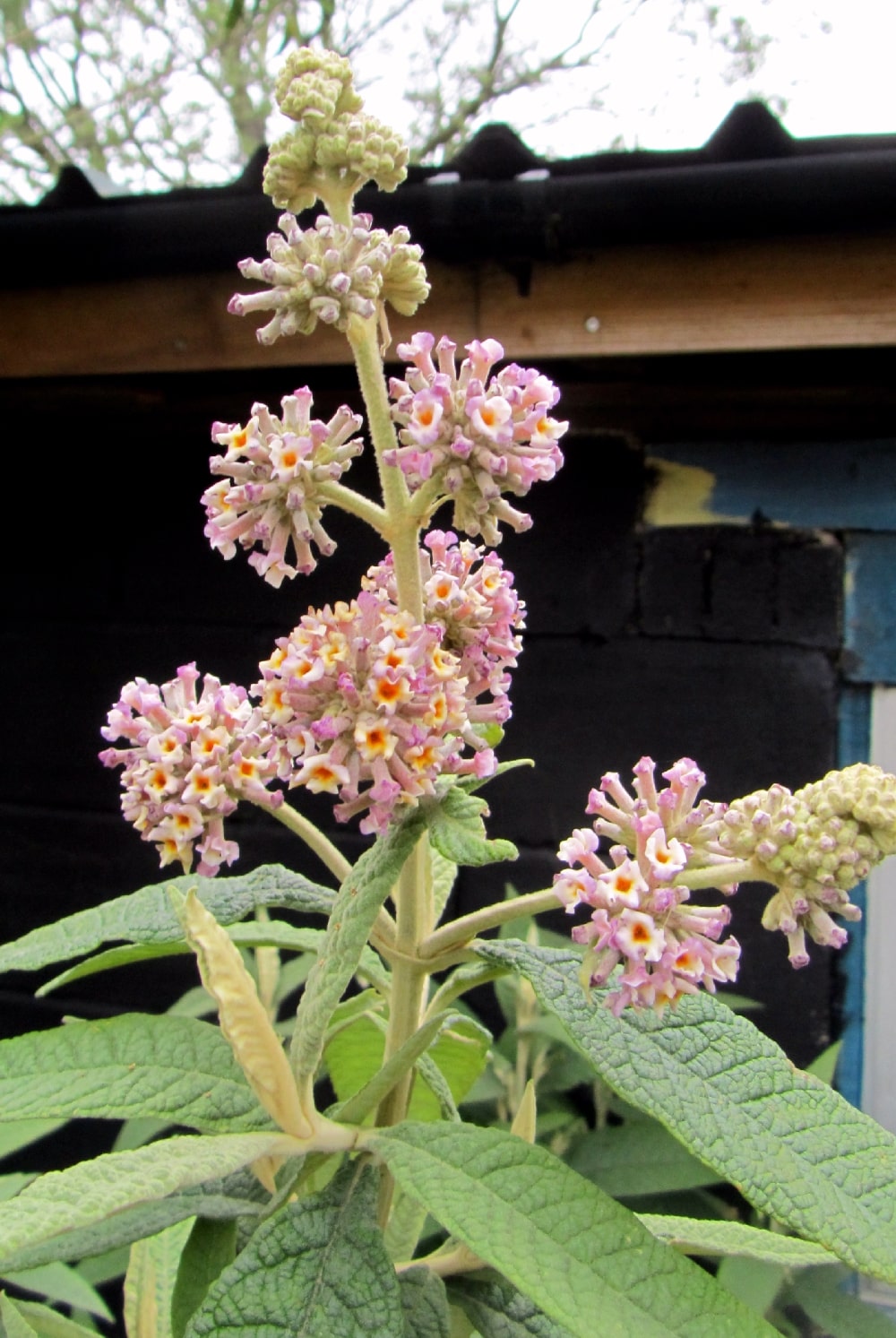
The flowers of 'Winter Sun' are two-toned
Open full size image in a new window
Other Buddleja Hybrids
There is a large number of in situ (found in the wild) and ex situ (raised in cultivation) Buddleja hybrids, although relatively few have received a name and commercial release. I personally have raised a fair number of inter-species hybrids, but few have proved to be of any horticultural merit. The following are hybrids which have been sold at one time or another as garden plants:
'Bel Argent' - A French hybrid of B. davidii and B. crispa. This is a large and straggly shrub, with grey foliage and purple-lilac flowers.
'Hotblackiana' - An old hybrid of B. forrestii and B. davidii var. veitchiana, developed by a Mr Hotblack of Cuckfield, Sussex, first exhibited in 1942, and now thought lost to horticulture. However, I grow a plant of hybrid origin originally labelled as B. limitanea (a type of B. forrestii). I have speculated this may in fact be 'Hotblackiana'.
Buddleja x lewisiana 'Margaret Pike' - A cross made between B. madagascariensis and B. asiatica by A V Pike at Hever Castle in 1951. A large, tender shrub with golden-yellow flowers in spring. The Australian hybrid 'Wattlebird', raised by R.J. Cherry in around 1993, is a the same cross and a very similar plant.
Buddleja x pikei 'Hever' - A cross made by Mr A.V. Pike of Hever Castle, supposedly B. alternifolia crossed with B. caryopteridifolia. However, it is debatable whether the plant used was an authentic B. caryopteridifolia, as this name has been frequently misapplied. The plant resembles B. x wardii, a large straggly shrub with greyish foliage and lilac-pink flowers.
There are several more hybrids of B. crispa and its synonymous species. Peter Moore at the Longstock Park Nursery (Hampshire) has bred a number of these hybrids: 'Autumn Surprise' (B. crispa x B. alternifolia 'Argentea') flowers in the autumn; 'Longstock Silver' (B. crispa type: agathosma x B. alternifolia), a plant shy to flower and grown primarily for its very silver foliage; and 'Longstock Gem' (B. crispa type: agathosma x B. alternifolia) flowers in May just before B. alternifolia. The Buddleja crispa Complex page has some more details.
Email:
buddlejagarden@gmail.com
© The Buddleja Garden 2011-2025.